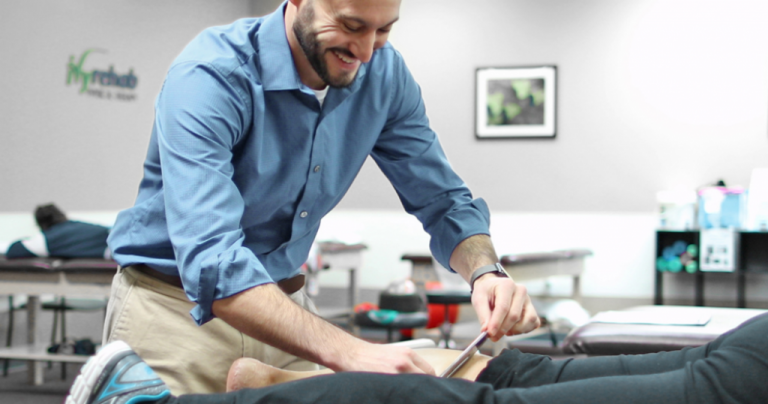
What is IASTM Therapy?
By: Joe Fiore/Director – Ivy Rehab Decatur, IL
IASTM stands for Instrument Aided Soft Tissue Manipulation, and may also be called ASTYM or Graston. Both ASTYM and Graston techniques are specific types of IASTM, much like Xerox is a type of copier. IASTM therapy is used extensively in the outpatient orthopedic setting due to the results generated with the technique. The tools do not replace the hands of a physical therapist, but only add another option in a therapist’s tool bag.
Purpose of IASTM Therapy
The purpose behind this manual physical therapy treatment is multi-factorial. The techniques used for IASTM treatment are designed to produce a healing response from the body to the affected area. This is accomplished through the breakdown of the capillary beds inducing nutrition to the soft tissue structure of the injured area. A secondary effect occurs at the site of scar tissue formation. Scar tissue is part of the body’s healing process for injured tissue. However, scar tissue is not as pliable, or contractile as normal tissue. Under a microscope, scar tissue appears as a plate of cooked spaghetti, whereas normal tissue appears as a box of uncooked spaghetti. With the pressure of the tools, mechanical changes at the cellular level can and do occur in order to normalize scar tissue as much as possible. The greatest effects from the IASTM tool are experienced when the clinician is aware of the fascial connections up and downstream from the affected area and can treat an entire limb, as opposed to spot treating, so if you plan to experience this type of therapy, it’s essential to find an experienced, IASTM trained physical therapist.
For example, when treating an elbow problem it is expected that the clinician treats up into the shoulder and down into the wrist and hand every visit. Important to note is that in order to achieve maximum results with IASTM, a comprehensive exercise program is necessary to stress the affected tissues and remodel the underlying tissues and create new movement patterns.
Benefits of IASTM Therapy
This therapy offers several benefits, such as:
- Pain Reduction: By breaking down scar tissue and fascial restrictions, IASTM can help reduce discomfort or pain in patients.
- Increased Circulation: The techniques used in IASTM can help increase circulation to the area, promoting faster healing.
- Improved Mobility and Range of Motion: IASTM can help improve mobility and range of motion by eliminating restrictions in the soft tissue.
- Faster Recovery Times: By addressing soft tissue issues more directly, IASTM can potentially speed up recovery times compared to traditional methods.
- Decreased Use of Medication: As a non-invasive treatment, IASTM might decrease the need for medication as it treats the root cause of the issue, not just the symptoms.
- Detection of Restrictions or Adhesions: The instruments used in IASTM can increase the clinician’s ability to detect fascial adhesions and restrictions.
Who Needs IASTM Therapy?
IASTM therapy is indicated for many different diagnoses treated with rehabilitation physical therapy on a daily basis. Originally designed to treat tendonitis, tendinosis, and tendinopathy, IASTM intervention also provides relief and increased functional outcomes in other instances. We have used IASTM on strains and sprains, arthritic joints, chronically painful tissues (knee pain, shoulder pain, neck pain, etc.), inflammation, post-operative areas with proper scar and incision healing, myofascial pain dysfunction just to name a few.
Potential Side Effects of IASTM
Side effects of these manual physical therapy treatments may include mild bruising along the lines of treatment, inflammation, and delayed onset muscle soreness. Often times, the patients describe a general warming feeling or even some tingling in IASTM treatment areas for up to 24 hours.
Reach Out to Ivy Rehab for IASTM
IASTM has been an efficient and effective treatment choice for us at Ivy Rehab, and most of our clinics have IASTM trained physical therapist to incorporate in this type of soft tissue injury mobilization as part of a well-rounded treatment plan.
Article by: Holly Lookabaugh-Deur, PT, DSc, GCS, CEEAA
Ivy Rehab Network
Holly is a practicing physical therapist, partner and Director of Clinical Services at Ivy Rehab Network with more than 40 years of experience in sports management with young athletes, and is board certified as a geriatric clinical specialist and certified exercise expert for aging adults. Deuer is certified as an aquatic and oncology rehabilitation specialist and serves as adjunct faculty at Central Michigan University and Grand Valley State University.
The medical information contained herein is provided as an information resource only, and does not substitute professional medical advice or consultation with healthcare professionals. This information is not intended to be patient education, does not create any patient-provider relationship, and should not be used as a substitute for professional diagnosis, treatment or medical advice. Please consult with your healthcare provider before making any healthcare decisions or for guidance about a specific medical condition. If you think you have a medical emergency, call your doctor or 911 immediately. IvyRehab Network, Inc. disclaims any and all responsibility, and shall have no liability, for any damages, loss, injury or liability whatsoever suffered as a result of your reliance on the information contained herein.